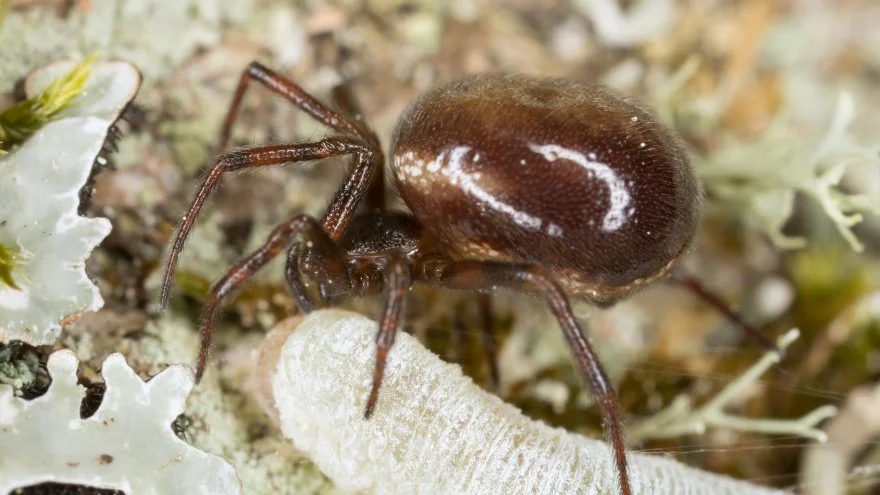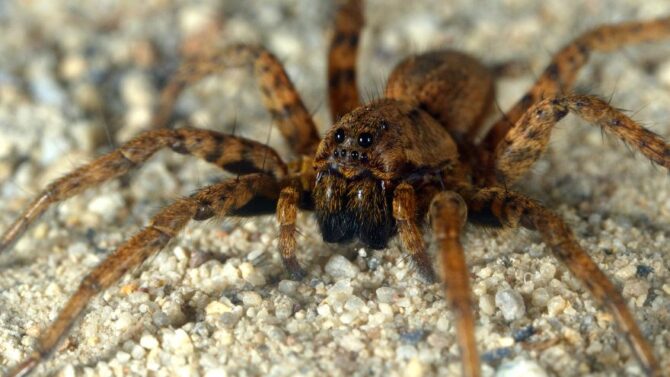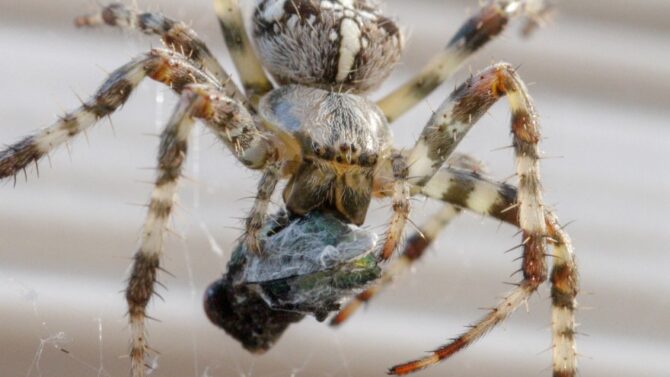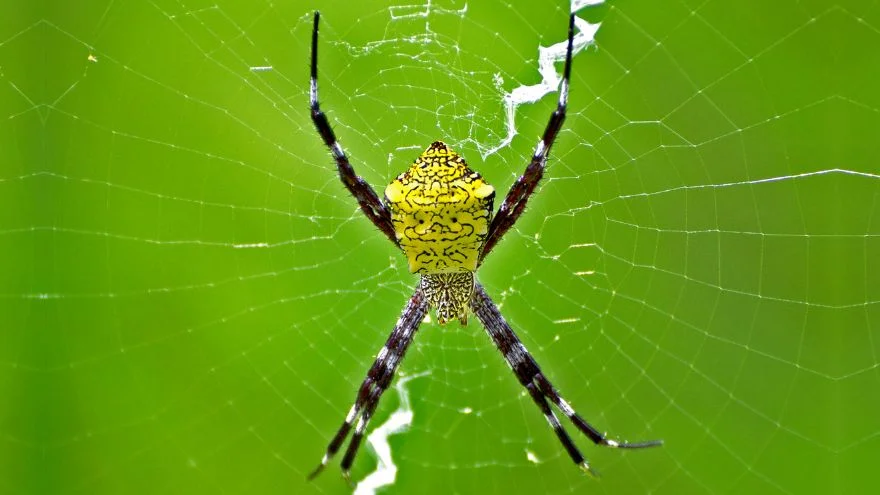The Rabbit Hutch Spider (Steatoda bipunctata), falls under the family of cobweb spiders and can be seen in different countries of Europe.
They are present in different places ranging from gardens to bushes, walls, and even in dark, quiet rooms.
Spiders are insects from the arthropod class with over 45,000 known species of spiders living in different habitats.
One popular example of a spider species is the rabbit hutch spider, scientifically known as Steatoda bipunctata.
As its name implies, the rabbit hutch spider lives in rabbit hutches, and they are an interesting species to learn about.
This article provides interesting facts about the habitat, life span, nutrition, and reproduction of the rabbit hutch spider.
Rabbit Hutch Spider (Steatoda bipunctata) – Scientific Classification
| Kingdom: | Animalia |
| Phylum: | Arthropoda |
| Subphylum: | Chelicerata |
| Class: | Arachnida |
| Order: | Araneae |
| Infraorder: | Araneomorphae |
| Family: | Theridiidae |
| Genus: | Steatoda |
| Species: | S. bipunctata |
General Description
Rabbit hutch spider is the common name of this species, while its scientific name is Steatoda bipunctata.
It is nocturnal (that means it is more active at night) and live mostly in rabbit hutches. This explains name.
These arachnids are present in the United Kingdom, Europe, and the United States of America, especially within the south. They are not large, unlike many other spiders.
Their females, being bigger than the male, can only grow as big as 0.7cm while their male counterparts are only 0.5cm.
The rabbit hutch spider looks a lot like the noble false widow spider that, at first sight, you might mistake one for the other.
However, you can easily identify and differentiate them from other species.
The rabbit hutch spider is notably smaller than the noble false widow spider. The spots’ color on their stomach is also an obvious way of identification; the rabbit hutch spider’s spots look like chestnuts.
Appearance
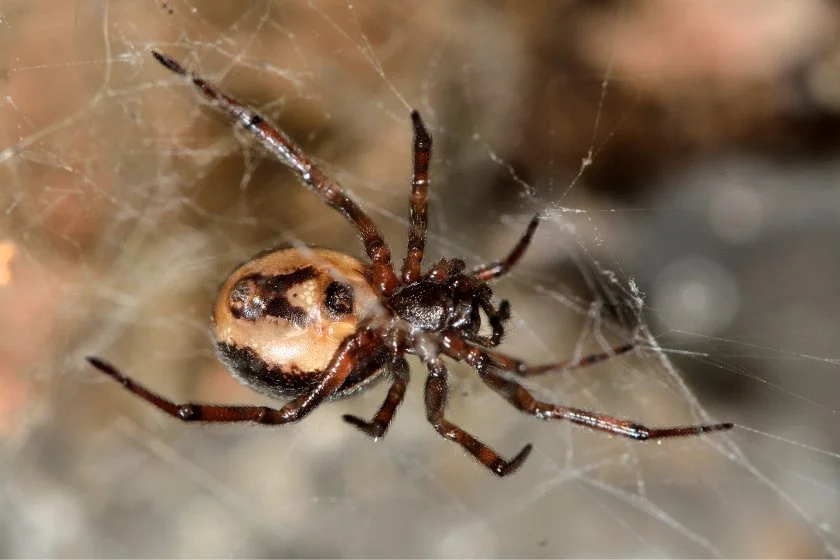
The scientific name ‘bipunctata’ comes from the Latin words ‘bi’, which means two, and ‘punctata’, meaning spots, thus referring to the two marks or spots on their stomach.
The spots are usually the same color as a chestnut, though some can be lighter.
A tiny cream-colored line also runs through their abdomen, and another, though pale, along the top of the abdomen, runs from front to back.
These spots are more on males than females and can change from one individual spider to another depending on their age.
In most cases, it becomes faint during old age and, in some cases, appears very dark and unmarked.
On another base, the legs have a continuing dark and light color pattern, which is common to other species in the same family, especially the Steatoda Nobilis.1
Webs
The webs look like filthy, intertwined mesh, often a group of vertical threads with a joining in the lower part towards the membrane.
They are mostly found in corners and dark places, not sticky but unbelievably strong. Sometimes they incorporate a web-constructed tube which they use for coverage.
Their webs are similar to that of a house spider. In some cases, they also look like a mat and can be useful in trapping unwanted insects.
Rabbit Hutch Habitats & Benefits
As said before, the name reflects where they love to live–in rabbit hutches. Gardens, sheds, garages, and homes are also places that serve as habitats.
However, they seem to prefer outdoor, sheltered areas. If you check your home or garden again; perhaps you are housing this species of spider without knowing.
They aren’t the enemies many people believe, though, Rabbit hutch spiders serve beneficial purposes to humans.
They help control or eradicate the presence of flies, beetles, wasps, and other household and garden pests.
They do so by spinning their web, which serves as a trap to entrap those pests. Hence, you might consider introducing them to your garden to help control pests.
Nutrition
The Rabbit hutch spider feeds on small insects. Their prey ranges from flies to wasps and lots of others, which they get from their web traps.
They feed on these insects for their body sustenance and metabolic processes.
These spiders have a deficient body metabolism. Thus, they can stay without water or food.
This is a clear contrast to what is obtainable in other small insects or animals. The little chemical activity allows them to adapt to unfavorable weather situations and the infrequent nature of their food sources.
The rabbit hutch spider can stay without water or food for as long as one year and show no sign of malnutrition.
Reproduction and Lifespan
The rabbit hutch spider doesn’t live as long as many animals or insects.
Their lifespan ranges from one to three years though only a few live up to three years because humans misjudge this insect and kill it indiscriminately.
Rabbit hutch spiders become sexually mature in the summer (which starts in June) and autumn (beginning in September).
They are present throughout the year, though their males are mostly active during mating.
When mating, the male makes some noisy chatter by dragging a sharp bluff in front of its stomach across a file-like ‘stridulous part’ behind the cephalothorax.
The noise entices the female to come toward the male for mating. When the process occurs, the female can lay over 50 to 100 pink-colored eggs in a white covering called the egg sac, which she will keep in the web.
Once the eggs hatch, they can survive independently in no distant time.
Venom and Biological Treatment
While many spiders have strong venoms that can paralyze their target, the rabbit hutch spider doesn’t follow that path.
Its venom is so frail that one can call them almost harmless, especially to human beings.
If these spiders find shelter in your home or garden, you can tolerate them as much as possible since their stay is more of symbiotic than parasitic.
But if there is any chance that you wouldn’t want them—maybe due to a phobia or allergies—you can use peppermint essential oil.
Rabbit hutch spiders hate the scent. You can dilute the oil with water and spray it near windows and doors.
Related: Hawaiian Garden Spider (Argiope appensa)
Additional Facts
- The rabbit hutch spider has the same shape as the black widow spider; hence, it can be mistaken for it, but its bite is less harmful to humans.
- The cephalothorax has different colors, which range from blackish-brown to reddish-brown.
- Their apodemes (the point where their muscles are attached) form pairs of small dimples.
- They have ringed legs.
- The males have large antennules which are kept frontwards.
- Below their stomach is a dark mark resembling the alpha letter of the Greek alphabet—other species of the same genus bear varying shapes of marks on their stomach.
- The rabbit hutch spider belongs to a family of comb-footed spiders known scientifically as the family Theridiidae.2
Conclusion
The rabbit hutch spider is a small harmless insect from the family Theridiidae that lives in rabbit hutches and outdoor habitats, hence its name.
However, unlike other species of spiders, they are harmless and beneficial to humans.
They help control pests in homes and gardens at no cost and can live for one to three years.
References & Notes
- Steatoda nobilis (Thorell, 1875). NBN Atlas.
- Liu, Jie et al. A revised and dated phylogeny of cobweb spiders (Araneae, Araneoidea, Theridiidae): A predatory Cretaceous lineage diversifying in the era of the ants (Hymenoptera, Formicidae). Molecular phylogenetics and evolution vol. 94,Pt B (2016): 658-675.
